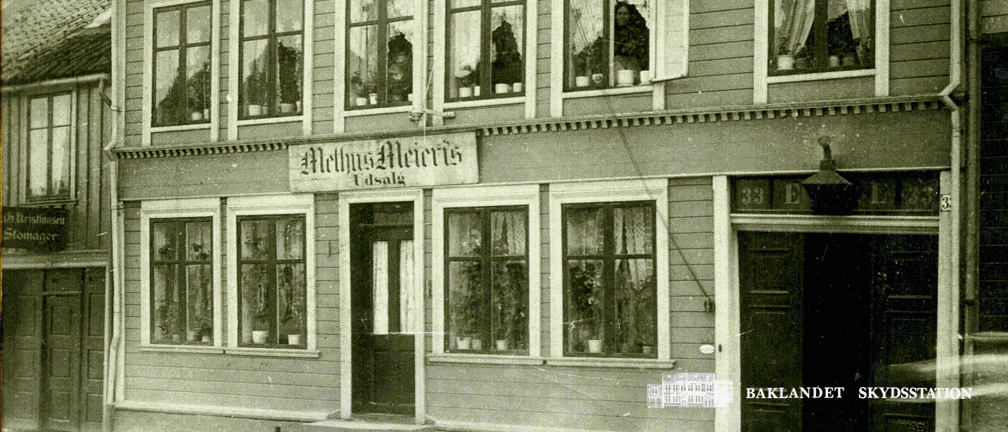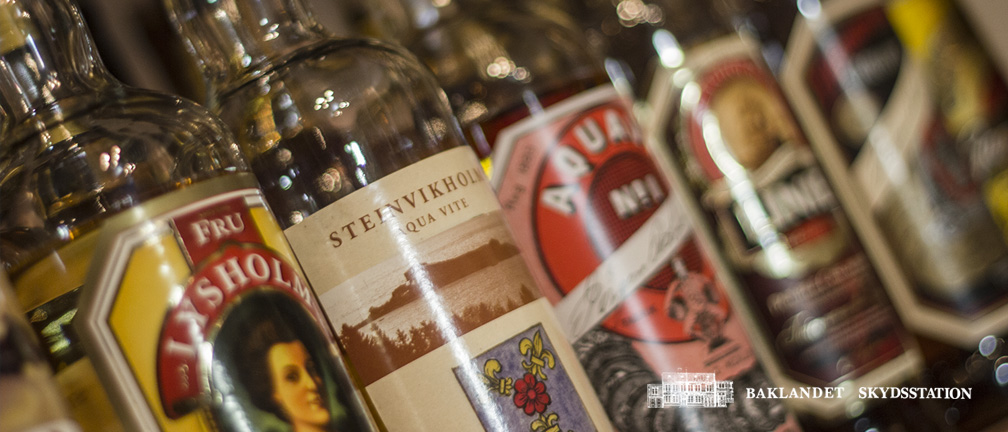History
Gurli's café is among the best preserved buildings on Bakklandet. We have a long and exciting history that dates back to the 1700's. The premises were home to many different companies from a transport station (although this is not documented), to a milliner, a carpentry workshop, a dairy and a launderette.

The building is thought to have been used for a cart business and transport station, but this is not documented. From the 1860's a milliner operated from the building. At the end of the 1800's the house belonged to Martha Klokseth and later to carpenter Ingebrigt Eide.
Between 1896-1944 the building was used as a dairy, which sourced its products from the Melhus dairy. It also used to be a carpentry workshop, a laundry and ironing business, a tailors and an early version of a lorry transport company on the building's first floor. From 1944-1995 the house was a private residence when architect Trond Eide bought it. It was later refurbished based on antiquarian principles and today retains many interesting antiquarian details. The renovation of the house makes it unusual in itself.
The main building facing the road is estimated to have been built in 1791.
Towards the courtyard are windows that date back to the end of the 1700's. The building was heavily renovated in 1893, and parts of the shop design from this period have been retained in the restaurant. In 1896, much of the building was complete and split into two floors, with rear buildings, gazebo (sadly demolished) and flagpole. Today café Baklandet Skydsstation is operated from the building and serves as a popular local café loved by many.
The building is the only one of its kind on Bakklandet to be listed. This is due to the well-maintained rear courtyard, which shows what the building would have looked like in Bakklandet in the 1800's.
Norwegian Aquavit
Relax and enjoy the atmosphere of this homely and mobile-free environment. That's what the peasants of the 1800's used to do, when visiting the town's local market. At that time there was a 'toll station' at Gamle Bybro, so they put their horses to rest at Skydsstationen and saved the toll fee, which they often spent on food and a shot of aquavit.

Aquavit is Norwegian culture at its best. Liquor here can be traced back to the start of Christianity. As early as the 1300's, many monks had mastered the art of distilling. At the start they thought they had discovered a universal medicine, which could help towards all manner of illnesses, hence the Latin name 'aqua vitae', meaning the water of life - and today aquavit (Norwegian: Akevit). Liquor is also supposed to have been used as medicine during the Black Death around the 1350 mark. Towards the end of the 1400's, liquor was sold in some of the pharmacies.
The first documented spiced liquor or aquavit in Norway is linked to the Archbishop Olav Engelbrektson in Nidaros.
In a letter dated 13 April 1531, the Danish Eske Bille Bergenshus was informed that he should send the bishop more of ‘the water called aqua vitae to help with all manner of diseases. In 1551 the first restrictions were enforced against the sale of alcohol. The church enforced a ban on the purchase and intake of alcohol before noon on Sundays. From 1568, it became illegal to sell or drink before or after the church service on religious holidays. The first liquor tax was introduced by King Christian IV in 1621.
A major leap towards what we today know as Norwegian aquavit, arrived in 1807, when the Trønders made the great discovery. Catharina Meincke from Trondheim, married into the Lysholm family, and became related to Jørgen B. Lysholm who in 1821 founded a distillery in Trondheim. Catharina Lysholm was widowed in 1772, at 28 years old. She had a good head for business and quickly established herself as one of the leading shipping companies in the city. Together with her brother she built several ships, including 'Trondhjems Prøve' in 1780, and traded with Europe and Asia. In 1805, 'Trondhjems Prøve' took a cargo of dried fish, ham and cheese to East India, Batavia to be precise, or modern Indonesia. The cargo included five large casks of potato liquor, which they had hoped to sell. The captain did not get any offers for the Norwegian liquor, and it was brought back home again. On 7 December 1806, 'Trondhjems Prøve' crossed the Equator on the way home with a cargo load of herbs and other goods. An oak cask of the unsold brandy was opened to celebrate the crossing, and the sailors got a surprise when they drank from their cups. Gone was the old musty potato brandy - a transformation had occurred in the oak casks during the voyage. Back in Trondheim in 1807, the casks were opened again. Linje aquavit had been discovered and the maturing in sherry casks had become a reality.
In 1821, the young newly qualified Jørgen B. Lysholm started his distillery and factory in Trondheim.
With knowledge of distilling, cask storage and linje aquavit, the business inheritor, after several years of attempts, created the brand that became synonymous with aquavit to the rest of the world. From the end of the 1830s, the export of split, salted and dried cod 'klippfisk' to South America and Lysholm regularly sent aquavit in oak casks on the ships that crossed the Equator. In the 1800's, Jørgen B. Lysholm had become the country's best known brand, and the company's aquavits were sold all over the world.
Right up until present day, having a 'Jørgen B' is synonymous with having a dram.
Today's Linje Aquavit continues to be produced at Jørgen B., but it is now Wilh. Wilhelmsen's large liners that carry the casks with Lysholm aquavit back and forth to Australia. LINJE AQUAVIT is the world's oldest aquavit brand. It is stored in oak casks for 16 months. The oak casks were first used for storing Oloroso sherry.